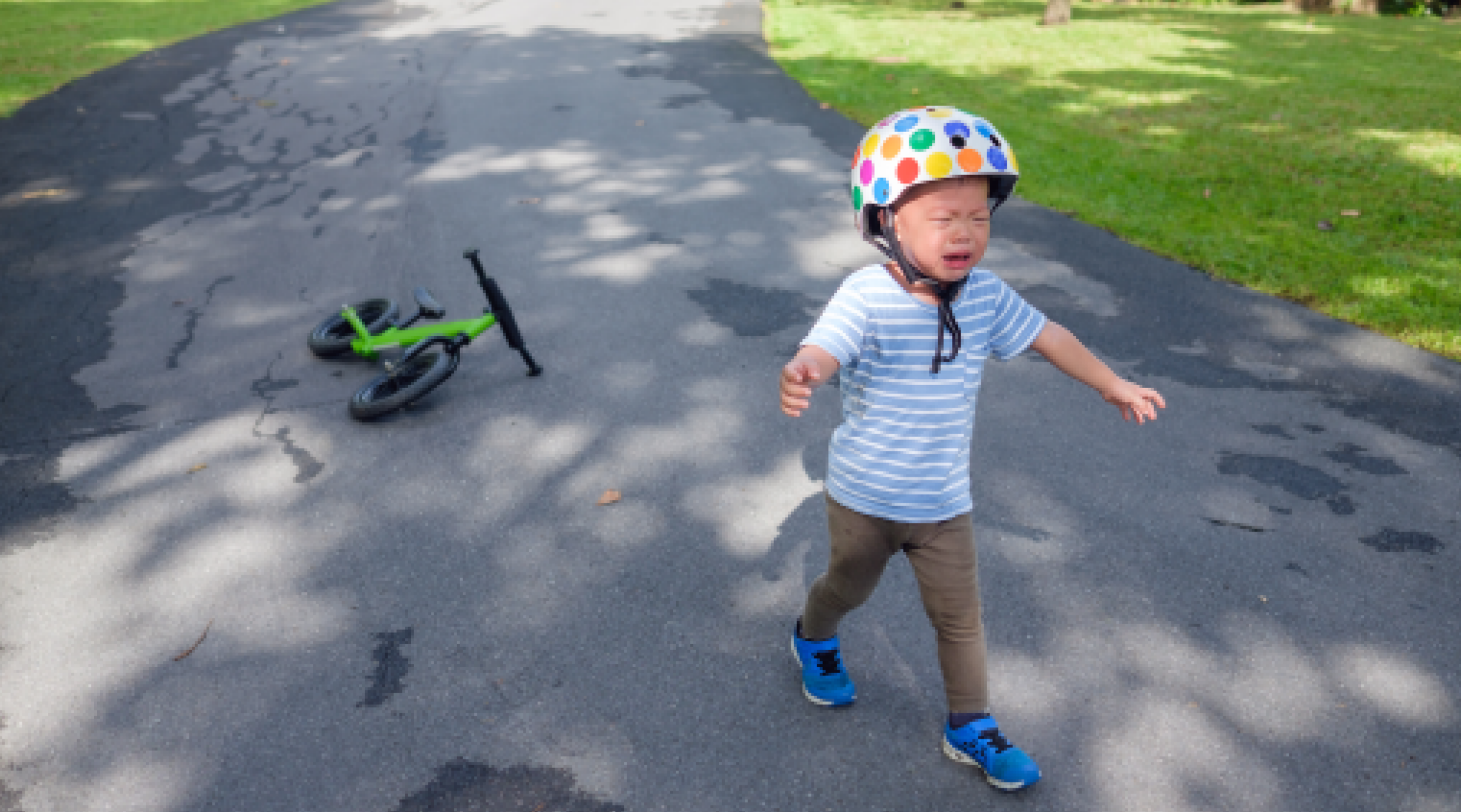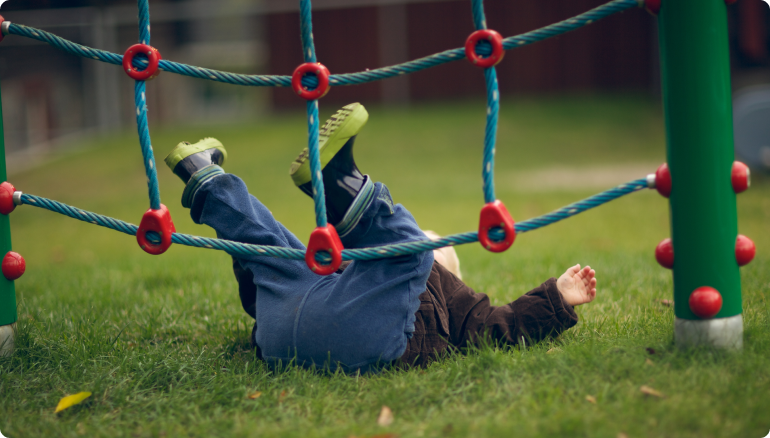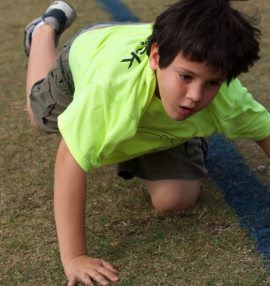When Clumsiness Is More Than It
Seems
If clumsiness has plagued you throughout your life and you often find yourself tripping over things, walking into doorways and bumping into walls, or having trouble playing sports, you might have a condition known as Vertical Heterophoria (VH).
It may be your eyes:
When Clumsiness Is More Than It Seems
If clumsiness has plagued you throughout your life and you often find yourself tripping over things, walking into doorways and bumping into walls, or having trouble playing sports, you might have a condition known as Vertical Heterophoria (VH).
It may be your eyes:

If your clumsiness has reached the point that you’ve started to experience anxiety and stress, not knowing when the next accident will happen, it’s important to seek the help of a trained NeuroVisual Specialist at Vision Specialists of Michigan.

It Could Be Your Eyes
Vertical Heterophoria (VH) is a form of Binocular Vision Dysfunction (BVD) characterized by a subtle vertical misalignment of the eyes. While this misalignment can be very subtle, it can make it incredibly difficult for our eyes to send one clear image to our brain.
Here’s what happens when someone has VH: With two eyes, we are able to see one clear image. This is because our brain is able to transform the images seen by each eye into a single image, which is known as binocular vision.
In patients with VH, there is a slight misalignment between their eyes resulting in their eyes being out of sync with one another, causing the brain to have a very difficult time processing those two separate images to form one clear image.
The result? The brain forces the eye aligning muscles to fix the problem by realigning the eyes. But the realignment is only temporary and misalignment then recurs, which is followed closely by realignment, and the cycle of misalignment and realignment continues. Over time, this places an immense amount of strain on the eye muscles and leads to dizziness, clumsiness and difficulty with coordination and depth perception.

Signs of Vertical Heterophoria in Children
Children as well as adults can be affected by VH, though it’s often harder to recognize and diagnose due to the fact that many kids don’t realize they have a vision problem because they don't know what "normal" is. It’s up to parents, teachers and caregivers to be on the lookout for signs that the children in their lives might be experiencing this condition or other possible vision problems. Some signs to watch for include:
Clumsiness:
Clumsiness in childhood as kids grow into their bodies is not at all unusual, but frequent and extreme bouts of clumsiness may indicate shadowed or double vision, as well as blurred vision.
Headaches:
Children who have vision problems often spend a good part of the day squinting and straining in an effort to see the board and other things in the classroom clearly. This can understandably lead to headaches, so if your child frequently complains of their head hurting and seems unusually cranky after a long day at school, it may be time for a NeuroVisual Examination.
Lack of Coordination:
While young children are often uncoordinated, by the time they hit school age, they should be fairly adept at activities that call for good depth perception and good hand-eye or hand-foot coordination (like catching or kicking a ball). If these activities continue to be a struggle, it could be a sign of VH.
Specific Symptoms in Children
If your child has VH, the symptoms will vary depending on their age.
For children ages 4 to 8-years-old, common behaviors and symptoms of VH can include:
- Poor handwriting (poor spacing, writing letters too big or small)
- Difficulty reading
- Avoiding activities
- Playing with toys very close to their face
- Sitting close to the TV
- Difficulty identifying shapes, colors and numbers that are age-appropriate
- Difficulty seeing the class board
- Frequently bumping into objects
- Difficulty catching balls
- Stomach aches and headaches at school or away from home
- Light sensitivity
- Covering one eye to see
- Anxiety in public places
- Frequent squinting in order to see

For children ages 9 to 13-years-old, common behaviors and symptoms of VH can include:
- Repeatedly bumping into things while walking
- Having difficulty completing homework due to headaches and nausea
- Repeatedly reading the same things over and over
- Sensitivity to bright lights
- Closing one eye to make it easier to see
- Blurred vision when using the computer
- Blurred vision or tired eyes when looking at the blackboard in class
- Verbal skills that are ahead of reading skills
- Frequent blinking

Symptoms of Vertical Heterophoria in Adults
There are several symptoms associated with VH in adults, which typically include the below. Some individuals experience all of these symptoms, while others experience only a few, such as headaches, nausea, and dizziness.
- Frequent head tilt
- Motion sickness
- Reading comprehension, difficulty reading and learning
- Dyslexia
- Learning disability
- ADHD/ADD

How Vertical Heterophoria is Diagnosed
To determine if your clumsiness is the result of VH, we suggest you first see your primary care physician or specialist to rule out other causes. If no cause is found for the symptoms, our team at Vision Specialists of Michigan can help determine if VH is the issue.
During your visit:
- We ask you to fill out a specialized questionnaire designed to screen for those who might have VH.
- You will be asked to complete a detailed Health History form.
- An eye exam is performed to determine the need for correction of nearsightedness, farsightedness, and astigmatism (a common imperfection in the eye’s curvature).
- A specialized exam is performed (NeuroVisual Examination) to determine if visual misalignment is present
- If diagnosed with VH, you will be fitted with a trial version of your new prescription. Most people notice a significant improvement in their symptoms within just a few minutes of putting on the trial lenses.
Get Treatment for Clumsiness
For anyone suffering from clumsiness, there is treatment. Our compassionate doctors at Vision Specialists of Michigan will complete a thorough NeuroVisual Examination to determine the extent of your vision misalignment (or your child’s) and prescribe you with the specialized aligning lenses. Every person can receive treatment for BVD, as long as they are old enough to wear the specialized aligning glasses (and be able to tell or show the doctor how they feel).Want to learn more about Binocular Vision Dysfunction?
Watch these videos of BVD patient experiences:
Pastor Jim’s Binocular Vision Dysfunction Story
Riley’s Binocular Vision Dysfunction Story
People also view
It may be your eyes
Daily Stomach Ache, Headache, Nausea:
Christine's Binocular Vision Dysfunction Story
Headaches and Learning Challenges:
Kali's Binocular Vision Dysfunction Story
Years of Daily Headaches, Nausea, and Dizziness:









